
views
Using Formal Titles
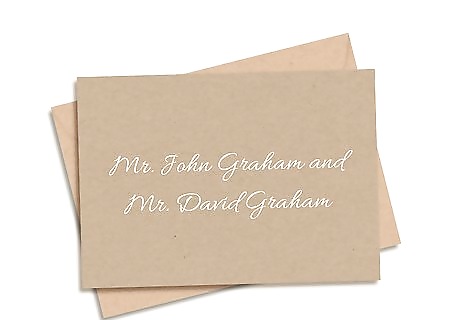
Choose Mr. and Mr. for 2 men who are married to each other. Address each member of a male married gay couple as “Mr.” This is the standard way to address any man, no matter what their sexuality or marital status is.Tip: When in doubt, always ask a married same-gender couple how they prefer to be addressed. There are general rules you can follow, but not every gay couple has the same preference, so they might appreciate it if you ask. For example, “Mr. John Graham and Mr. David Graham.” It’s also perfectly acceptable to just list the last name once, which would look like “Mr. John and Mr. David Graham.” All the rules for addressing a married gay couple with the same last name apply whether they have chosen to use 1 last name or to use a hyphenated version of both their last names.
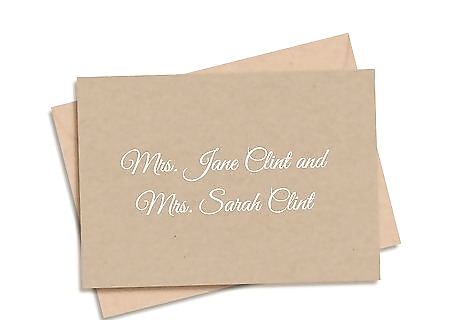
Select Mrs. and Mrs. for 2 women who are married to one another. Address each member of a female married gay couple as “Mrs.” This is the standard way to address any married woman in English. For instance, “Mrs. Jane Clint and Mrs. Sarah Clint.” If you just want to write the last name once, you can write it like “Mrs. Jane and Mrs. Sarah Clint.”
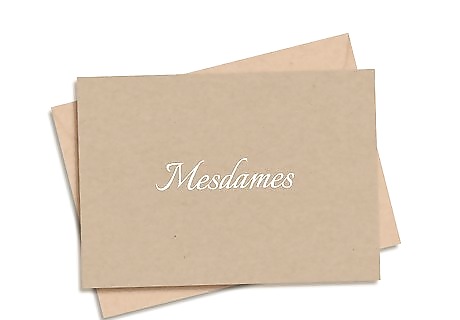
Utilize Messrs. or Mesdames if you want to use a plural title. Use “Messrs.” for a male same-gender married couple and use “Mesdames” for a female same-gender married couple. These are technically French plural titles, but are perfectly acceptable to use in English formal addresses. Messrs. is an abbreviation for messieurs, which is the plural form of monsieur. You can shorten mesdames to mmes. if you want a shorter plural title for a female couple.
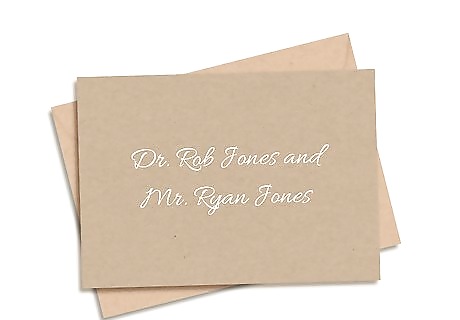
Replace Mr. or Mrs. with Dr. or Doctor if 1 member of the couple is a doctor. This is only an option, but it is acceptable to use “Dr.” or “Doctor” for 1 person if that person is actually a doctor. Keep in mind that you don’t have to do this and it is still acceptable to use “Mr.” or “Mrs.” For example, “Dr. Rob Jones and Mr. Ryan Jones.” Put Drs. or Doctors at the beginning of the address if both people are doctors. For example, “Doctors Maria Constantine and Laura Constantine.” If they are lawyers, you can put their name comma Esquire. If you address close relatives, then the Mr. and Mrs. are not necessarily required.
Ordering the Names

List the person you are inviting first if you are sending an invitation. This applies mostly to formal invitations like wedding invitations, for which you might primarily be inviting someone you are close with and inviting their partner as a courtesy. Write the name of the person you are primarily writing the invitation to first, followed by the name of their partner. For instance, if you are inviting your old friend Roger Gonzalez to your wedding and you want to extend the invitation to his partner Alex Gonzalez, write “Mr. Roger Gonzalez and Mr. Alex Gonzalez.” This could apply anytime you're inviting a married gay person you know to some kind of formal event and you're inviting they're partner as a "plus 1."
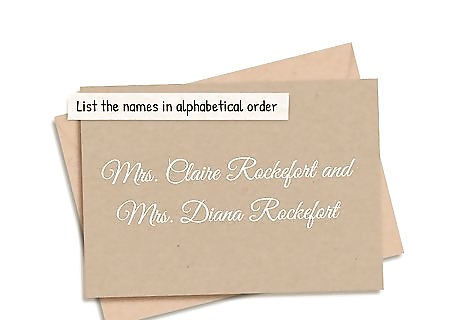
List the names in alphabetical order if you can’t decide who to put first. This is the default way to list the names of 2 people when the order doesn’t matter to you. Write the name of the person that starts with a letter earlier in the alphabet first, followed by the name of the second member of the couple. For example, “Mr. Adam Irvine and Mr. Bob Irvine,” or “Mrs. Claire Rockefort and Mrs. Diana Rockefort.”
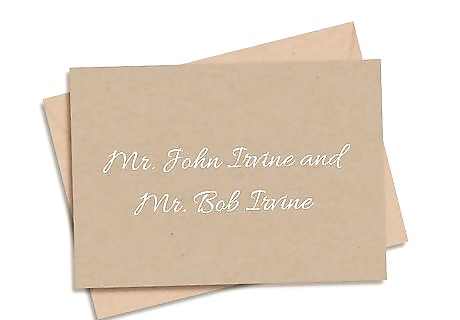
Put either person’s name first if you don’t have a preference. There are no rules set in stone about whose name you have to put first when you’re addressing a gay couple. Choose what you think sounds better or more natural. Though it doesn’t matter which order you put the names of the people in the couple, try to be consistent. For instance, whoever’s name you write first on something like an invitation should also go first on the address on the envelope.




















Comments
0 comment